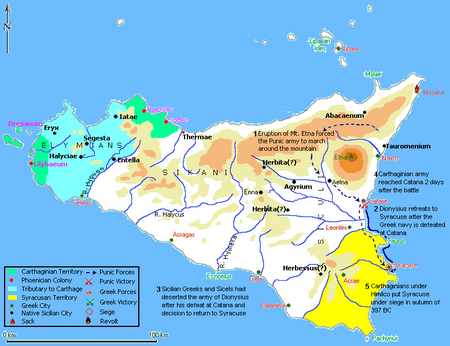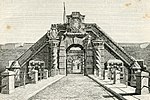Siege of Syracuse (397 BC)

The siege of Syracuse in 397 BC was the first of four unsuccessful sieges Carthaginian forces would undertake against Syracuse from 397 to 278 BC. In retaliation for the siege of Motya by Dionysius of Syracuse, Himilco of the Magonid family of Carthage led a substantial force to Sicily. After retaking Motya and founding Lilybaeum, Himilco sacked Messana, then laid siege to Syracuse in the autumn of 397 BC after the Greek navy was crushed at Catana. The Carthaginians followed a strategy which the Athenians had used in 415 BC and were successful in isolating Syracuse. A pestilence broke out in the Carthaginian camp in the summer of 396 BC, which killed the majority of the troops. Dionysius launched a combined land and sea attack on the Carthaginian forces, and Himilco escaped with the Carthaginian citizens after an underhanded deal with Dionysius. The surviving Libyans were enslaved, the Sicels melted away while the Iberians joined Dionysius. Dionysius began expanding his domain, while Carthage, weakened by the plague, took no action against Syracusan activities until 393 BC.
Excerpt from the Wikipedia article Siege of Syracuse (397 BC) (License: CC BY-SA 3.0, Authors, Images).Siege of Syracuse (397 BC)
Via Madonna delle Lacrime, Syracuse
Geographical coordinates (GPS) Address Nearby Places Show on map
Geographical coordinates (GPS)
| Latitude | Longitude |
|---|---|
| N 37.069166666667 ° | E 15.2875 ° |
Address
Madonna delle Lacrime
Via Madonna delle Lacrime
96100 Syracuse
Sicily, Italy
Open on Google Maps











